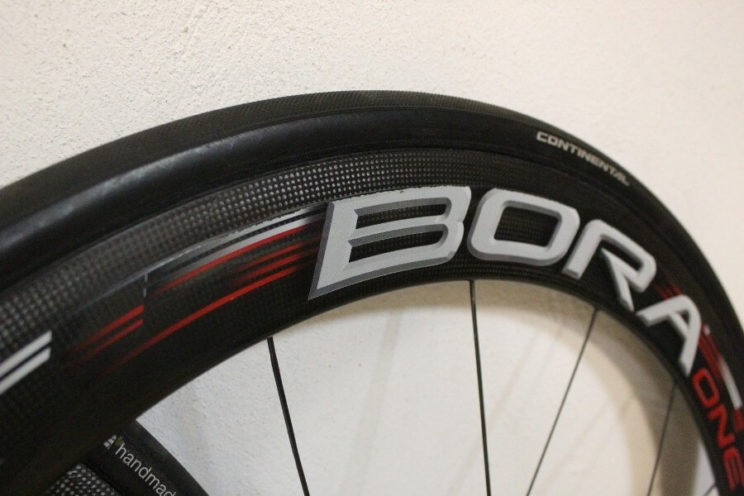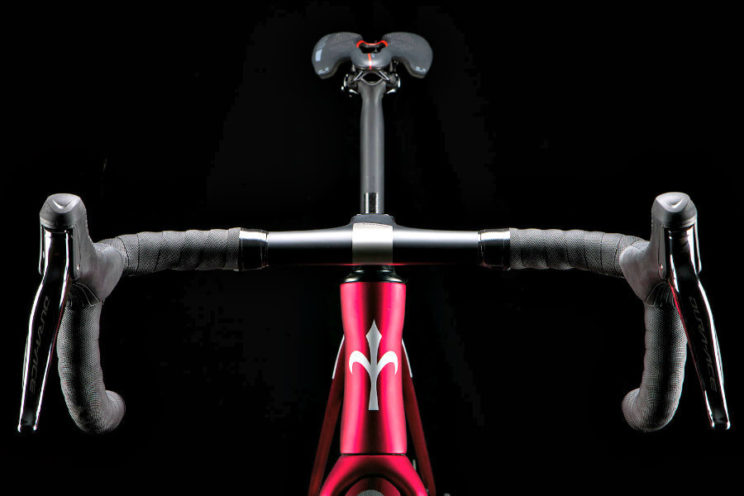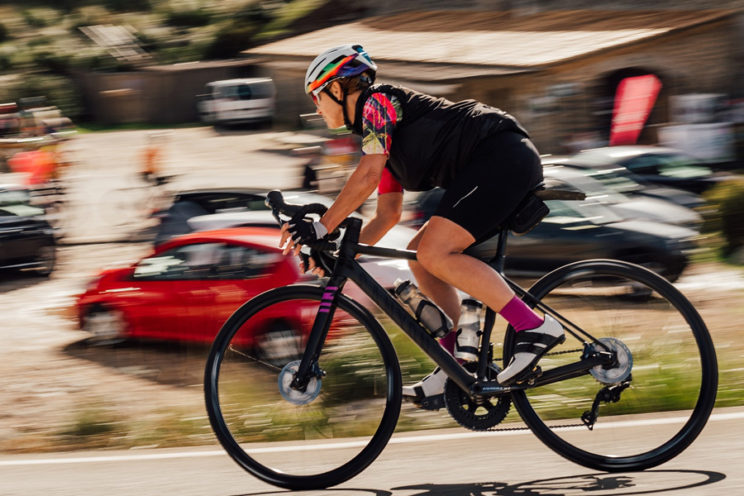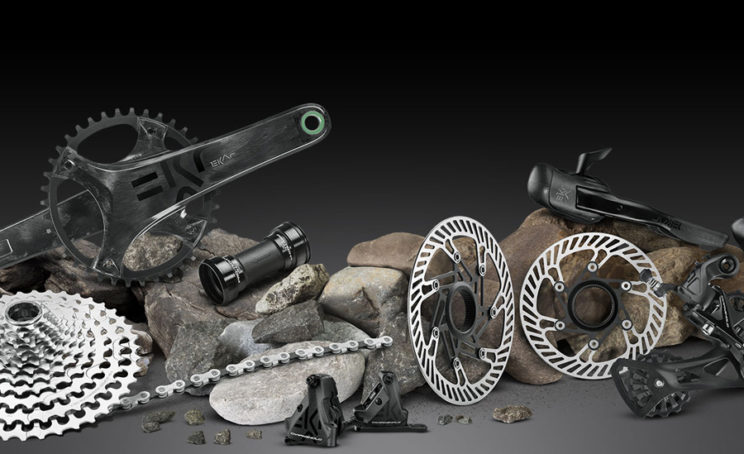In recent times, technology and road bicycles have become
companions Inseparable. The specific weight of R&D departments in large brands grows and grows. And we favor cyclists, which we have an cast of infinite options and configurations.
Without wanting to guess the future, we share with you trends that could hit hard in the near future. Some are already part of our daily cycling experience. Others are simply future. What do you think?
The wheel width stops growing

Thanks to the generalization of disc brakes, we have attended increasingly wide road tires. But where is the limit? Many experts agree that more than 30 mm is meaningless. From that measure, the covers are heavier, less aerodynamics and what is more important: almost no one manufactures them, except for some model, such as the continental Grand Prix 5000 s TR, which marks the boundary with its 32 mm. From that measures we would enter the “All-Road” segment, which is the subject of this article.
Therefore, it is possible that the industry stands between 28 and 30 mm. In this case, the wide wheel steps would not make sense to, for example, 34 mm. In this way, we may return to wheel steps more tight on the road bikes.
Electronic transmissions are imposed
[Captation id = "Attachment_8369" Align = "Alignnone" Width = "744"]

Image: Shimano 105 Di2 app.[/caption]
SRAM has marked the rhythm in the implementation of electronic transmissions. Its three main groups (network, force and rival) already have the surname ETAP Axs, which distinguishes this category of devices.
In 2022, Shimano launched the 105 DI2, an electronic version of his third level group, which was originally an economic group for sports management, but not too intensive. It was the entrance group prior to the most pro models: Dura-Ace and Ultegra.
Continuing with the 105 Di2, we remember that his wreck folds that of his mechanical version. Anyway, everything seems to indicate that even low -end groups will walk towards electronic versions seems to continue. Will there be space for the cyclist who is still looking for a light mechanical group, of good quality and in half of the price than an electronic one? We'll be alert.
Fever for integration

We like it or not, the integration of cockpits into bicycle design is an unstoppable trend in mid-high range bicycles. The concern reaches the extreme. For example, large brands such as Shimano and SRAM seek formulas to hide the visible hose brakes.
It is true that this trend does not imply that it is bicycle brands that assume the development of this ionnovation. Brands such as FSA (with your ACR cable guidance system) or DEDA (with DCR), to give a couple of examples, offer solutions that already use reference manufacturers, such as Merida.
Integration also affects the accessories that some bicycles include standard in their high -end bicycles. Such is the case, another example, of the Cannondale Smartsense system, which mounts integrated lights and a backward radar that are loaded by a single battery mounted in the box. It is true that the reception that the first bike obtained to mount it (the Synapse 2022 model) was unequal.
Will brands adopt this trend in your road models? If they provide comfort without increasing weight, why not? Recall that the rejection is not so far that the first disc brakes caused within the road cycling community.
The category endurance It diversifies
[Captation Id = "Attachment_6993" Align = "Alignnone" Width = "744"]

Image: Pixabay[/caption]
It is not here to confuse by introducing new cycling modalities, in a way, artificial or lacking foundation. A shadow that also plans in the MTB world, with the Down Country category for the maximum exponent.
That said, it is true that the Endurance bicycle category begins to show fragmentation signs. Right now, two trends are glimpsed: the models focused on speed and aerodynamic performance, in front of the most relaxed and off -road sports bicycles.
If you think, let's look at some examples within the current market.
Giant's Defy model maintains a classical endurance bike concept and geometry. It is light, agile and comfortable. In summary, it has the typical features of a classical resistance bicycle, of those of manual. It will be interesting, therefore, check what will be the path chosen by this platform in its next edition.
The latest model of the Trek Domane, meanwhile, has been reunited with its roots, which have a lot to do with the classic cyclists. At the other extreme we could find the Cannondale Synapse, which decided to distance themselves from the competition (in fact, the first models after its launch did not even have an UCI certification); A bike with large spaces for tires and device integration, such as lights and a radar.
The Synapse is a resistance bicycle capable of performing light gravel and designed work for real -world cyclists, not for runners who used to flirt with resistance bicycles in the Spring Classics.
We will see where other brands walk. The Specialized Roubaix will be a model to take into account. We already know the espcific weight of the American brand, also in this segment.
Movement in Campagnolo?
[Captation id = "Attachment_7164" Align = "Alignnone" Width = "744"]

Ekar Group, the specific Campagnolo for Gravel. Image: Campagnolo.[/caption]
It is one of the debates that has already reached the road growers: what will happen to Campagnolo?
The last launch goes back to 2020, when his group saw his group for Grave: Campagnolo Ekar. For a brand so focused on high -end road performance, producing a specific group for 13 speed grave and a single dish was a surprising and bold movement.
However, it is striking that such an innovative and linked brand to the Top competition cycling has not responded to the movements of the other two greats: Shimano and Sram. The most recent movement of the Italian brand in this segment dates back to the first decade of the century.
It could be that the next counterattack of Campagnolo was to implement the 13 -speed cassette in its road groups. It could also be that it decided to launch a product with integrated connecting potting, since some of its patents are public in this area.
Will you bet on getting into the car of electronic transmissions? Maybe yes, or maybe not. Time will tell.
Greater presence of TUBELESS
International regulations have long supported the reliability and ease of installation of tubess systems. In fact, there are those who do not hesitate to predict the medium -term death of the air chambers. It may be a lot to say, but what is clear is that the use of this technology in road cycling is a rising trend.
Also in the professional world. In fact, many evidence shows that they are faster than traditional tubular.
There are more and more medium and high ranges bicycles that come from the factory with TUBELESS READY wheels and, directly, without camera. The main manufacturers such as Zipp, ENV, DT Swiss or Reynolds have long produced their Top wheels already prepared for tubess.
For their part, covers brands are also doing their job. One of the best considered, the continental GP5000 S TR, is compatible with all those tubess tires.
Therefore, with easily available components, and greater knowledge, we could be attending an acceleration of the tubeless phenomenon on roads.
 Thanks to the generalization of disc brakes, we have attended increasingly wide road tires. But where is the limit? Many experts agree that more than 30 mm is meaningless. From that measure, the covers are heavier, less aerodynamics and what is more important: almost no one manufactures them, except for some model, such as the continental Grand Prix 5000 s TR, which marks the boundary with its 32 mm. From that measures we would enter the “All-Road” segment, which is the subject of this article.
Therefore, it is possible that the industry stands between 28 and 30 mm. In this case, the wide wheel steps would not make sense to, for example, 34 mm. In this way, we may return to wheel steps more tight on the road bikes.
Thanks to the generalization of disc brakes, we have attended increasingly wide road tires. But where is the limit? Many experts agree that more than 30 mm is meaningless. From that measure, the covers are heavier, less aerodynamics and what is more important: almost no one manufactures them, except for some model, such as the continental Grand Prix 5000 s TR, which marks the boundary with its 32 mm. From that measures we would enter the “All-Road” segment, which is the subject of this article.
Therefore, it is possible that the industry stands between 28 and 30 mm. In this case, the wide wheel steps would not make sense to, for example, 34 mm. In this way, we may return to wheel steps more tight on the road bikes.
 Image: Shimano 105 Di2 app.[/caption]
SRAM has marked the rhythm in the implementation of electronic transmissions. Its three main groups (network, force and rival) already have the surname ETAP Axs, which distinguishes this category of devices.
In 2022, Shimano launched the 105 DI2, an electronic version of his third level group, which was originally an economic group for sports management, but not too intensive. It was the entrance group prior to the most pro models: Dura-Ace and Ultegra.
Continuing with the 105 Di2, we remember that his wreck folds that of his mechanical version. Anyway, everything seems to indicate that even low -end groups will walk towards electronic versions seems to continue. Will there be space for the cyclist who is still looking for a light mechanical group, of good quality and in half of the price than an electronic one? We'll be alert.
Image: Shimano 105 Di2 app.[/caption]
SRAM has marked the rhythm in the implementation of electronic transmissions. Its three main groups (network, force and rival) already have the surname ETAP Axs, which distinguishes this category of devices.
In 2022, Shimano launched the 105 DI2, an electronic version of his third level group, which was originally an economic group for sports management, but not too intensive. It was the entrance group prior to the most pro models: Dura-Ace and Ultegra.
Continuing with the 105 Di2, we remember that his wreck folds that of his mechanical version. Anyway, everything seems to indicate that even low -end groups will walk towards electronic versions seems to continue. Will there be space for the cyclist who is still looking for a light mechanical group, of good quality and in half of the price than an electronic one? We'll be alert.
 We like it or not, the integration of cockpits into bicycle design is an unstoppable trend in mid-high range bicycles. The concern reaches the extreme. For example, large brands such as Shimano and SRAM seek formulas to hide the visible hose brakes.
It is true that this trend does not imply that it is bicycle brands that assume the development of this ionnovation. Brands such as FSA (with your ACR cable guidance system) or DEDA (with DCR), to give a couple of examples, offer solutions that already use reference manufacturers, such as Merida.
Integration also affects the accessories that some bicycles include standard in their high -end bicycles. Such is the case, another example, of the Cannondale Smartsense system, which mounts integrated lights and a backward radar that are loaded by a single battery mounted in the box. It is true that the reception that the first bike obtained to mount it (the Synapse 2022 model) was unequal.
Will brands adopt this trend in your road models? If they provide comfort without increasing weight, why not? Recall that the rejection is not so far that the first disc brakes caused within the road cycling community.
We like it or not, the integration of cockpits into bicycle design is an unstoppable trend in mid-high range bicycles. The concern reaches the extreme. For example, large brands such as Shimano and SRAM seek formulas to hide the visible hose brakes.
It is true that this trend does not imply that it is bicycle brands that assume the development of this ionnovation. Brands such as FSA (with your ACR cable guidance system) or DEDA (with DCR), to give a couple of examples, offer solutions that already use reference manufacturers, such as Merida.
Integration also affects the accessories that some bicycles include standard in their high -end bicycles. Such is the case, another example, of the Cannondale Smartsense system, which mounts integrated lights and a backward radar that are loaded by a single battery mounted in the box. It is true that the reception that the first bike obtained to mount it (the Synapse 2022 model) was unequal.
Will brands adopt this trend in your road models? If they provide comfort without increasing weight, why not? Recall that the rejection is not so far that the first disc brakes caused within the road cycling community.
 Image: Pixabay[/caption]
It is not here to confuse by introducing new cycling modalities, in a way, artificial or lacking foundation. A shadow that also plans in the MTB world, with the Down Country category for the maximum exponent.
That said, it is true that the Endurance bicycle category begins to show fragmentation signs. Right now, two trends are glimpsed: the models focused on speed and aerodynamic performance, in front of the most relaxed and off -road sports bicycles.
If you think, let's look at some examples within the current market.
Giant's Defy model maintains a classical endurance bike concept and geometry. It is light, agile and comfortable. In summary, it has the typical features of a classical resistance bicycle, of those of manual. It will be interesting, therefore, check what will be the path chosen by this platform in its next edition.
The latest model of the Trek Domane, meanwhile, has been reunited with its roots, which have a lot to do with the classic cyclists. At the other extreme we could find the Cannondale Synapse, which decided to distance themselves from the competition (in fact, the first models after its launch did not even have an UCI certification); A bike with large spaces for tires and device integration, such as lights and a radar.
The Synapse is a resistance bicycle capable of performing light gravel and designed work for real -world cyclists, not for runners who used to flirt with resistance bicycles in the Spring Classics.
We will see where other brands walk. The Specialized Roubaix will be a model to take into account. We already know the espcific weight of the American brand, also in this segment.
Image: Pixabay[/caption]
It is not here to confuse by introducing new cycling modalities, in a way, artificial or lacking foundation. A shadow that also plans in the MTB world, with the Down Country category for the maximum exponent.
That said, it is true that the Endurance bicycle category begins to show fragmentation signs. Right now, two trends are glimpsed: the models focused on speed and aerodynamic performance, in front of the most relaxed and off -road sports bicycles.
If you think, let's look at some examples within the current market.
Giant's Defy model maintains a classical endurance bike concept and geometry. It is light, agile and comfortable. In summary, it has the typical features of a classical resistance bicycle, of those of manual. It will be interesting, therefore, check what will be the path chosen by this platform in its next edition.
The latest model of the Trek Domane, meanwhile, has been reunited with its roots, which have a lot to do with the classic cyclists. At the other extreme we could find the Cannondale Synapse, which decided to distance themselves from the competition (in fact, the first models after its launch did not even have an UCI certification); A bike with large spaces for tires and device integration, such as lights and a radar.
The Synapse is a resistance bicycle capable of performing light gravel and designed work for real -world cyclists, not for runners who used to flirt with resistance bicycles in the Spring Classics.
We will see where other brands walk. The Specialized Roubaix will be a model to take into account. We already know the espcific weight of the American brand, also in this segment.
 Ekar Group, the specific Campagnolo for Gravel. Image: Campagnolo.[/caption]
It is one of the debates that has already reached the road growers: what will happen to Campagnolo?
The last launch goes back to 2020, when his group saw his group for Grave: Campagnolo Ekar. For a brand so focused on high -end road performance, producing a specific group for 13 speed grave and a single dish was a surprising and bold movement.
However, it is striking that such an innovative and linked brand to the Top competition cycling has not responded to the movements of the other two greats: Shimano and Sram. The most recent movement of the Italian brand in this segment dates back to the first decade of the century.
It could be that the next counterattack of Campagnolo was to implement the 13 -speed cassette in its road groups. It could also be that it decided to launch a product with integrated connecting potting, since some of its patents are public in this area.
Will you bet on getting into the car of electronic transmissions? Maybe yes, or maybe not. Time will tell.
Ekar Group, the specific Campagnolo for Gravel. Image: Campagnolo.[/caption]
It is one of the debates that has already reached the road growers: what will happen to Campagnolo?
The last launch goes back to 2020, when his group saw his group for Grave: Campagnolo Ekar. For a brand so focused on high -end road performance, producing a specific group for 13 speed grave and a single dish was a surprising and bold movement.
However, it is striking that such an innovative and linked brand to the Top competition cycling has not responded to the movements of the other two greats: Shimano and Sram. The most recent movement of the Italian brand in this segment dates back to the first decade of the century.
It could be that the next counterattack of Campagnolo was to implement the 13 -speed cassette in its road groups. It could also be that it decided to launch a product with integrated connecting potting, since some of its patents are public in this area.
Will you bet on getting into the car of electronic transmissions? Maybe yes, or maybe not. Time will tell.












